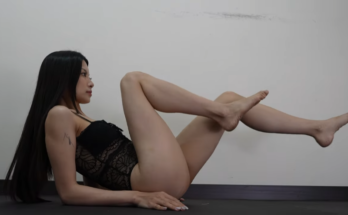
Hip pain is one of those subtle discomforts that can quietly steal our comfort, limit our mobility, and even affect sleep. Sitting for hours at a desk, strenuous workouts, or simply the natural tightness that comes with aging can all lead to tension in the hip muscles. The good news? Yoga offers a gentle, effective solution. By incorporating targeted stretches into your evening routine, you can release tension, restore flexibility, and say goodbye to hip pain.
In this guide, we’ll explore five effective yoga stretches specifically designed for evening practice — to relax your body, calm your mind, and create space in your hips. These poses are suitable for all levels and can be done in the comfort of your home before bed.
1. Butterfly Pose (Baddha Konasana)
Butterfly pose is a classic hip opener that stretches the inner thighs, groin, and hips. It’s simple, yet highly effective for relieving tension that builds up from sitting or standing all day.
How to do it:
- Sit on your mat with your spine tall and legs extended.
- Bend your knees and bring the soles of your feet together, letting your knees fall outward.
- Hold your feet with your hands and gently press your elbows on your thighs to encourage a deeper stretch.
- Keep your back straight, chest lifted, and breathe deeply.
Benefits:
- Opens the inner thighs and groin.
- Increases flexibility in the hips.
- Improves circulation and relaxes the lower body.
Tip: To deepen the stretch, gently lean forward, keeping your spine long. Don’t force it — the goal is a gentle release, not pain.
2. Pigeon Pose (Eka Pada Rajakapotasana)
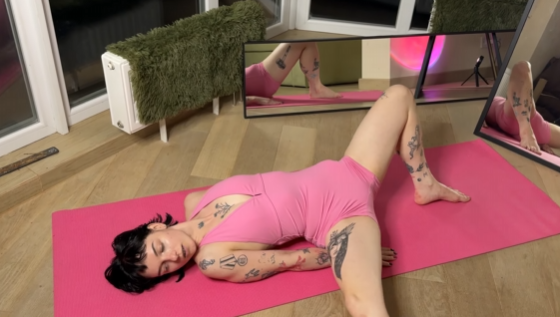
Pigeon pose is widely regarded as one of the most effective stretches for tight hips. It targets the hip flexors and glutes, releasing deep-seated tension.
How to do it:
- Start in a plank or downward-facing dog position.
- Bring your right knee forward and place it behind your right wrist, with your shin angled slightly toward the left.
- Extend your left leg straight back, keeping the hips square.
- Inhale to lengthen your spine, exhale to fold gently over your front leg.
Benefits:
- Opens the hip flexors and glutes.
- Releases tension stored in the lower back and hips.
- Improves flexibility for sitting, walking, and daily activities.
Tip: If your hips feel tight, place a folded blanket or cushion under the front hip for support. Hold for 30–60 seconds and switch sides.
3. Low Lunge (Anjaneyasana)
Low lunge is a dynamic stretch that not only opens the hip flexors but also strengthens the legs and enhances balance. Practicing it in the evening helps release tightness accumulated throughout the day.
How to do it:
- Begin in a standing position and step your right foot forward into a lunge.
- Lower your left knee to the mat and tuck your toes.
- Align your front knee over the ankle, and gently press your hips forward.
- Lift your chest and extend your arms overhead for a deeper stretch.
Benefits:
- Stretches the hip flexors, quads, and groin.
- Reduces lower back stiffness caused by sitting.
- Encourages better posture and alignment.
Tip: To intensify the stretch, press your hips forward and slightly rotate the torso toward the raised arms. Keep your shoulders relaxed and breathe deeply into the hips.
4. Figure Four Stretch (Supine Pigeon or Eye of the Needle Pose)
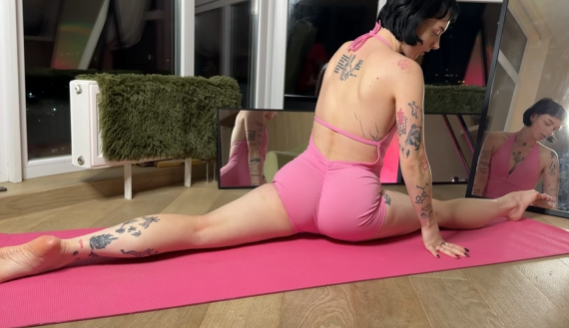
Figure Four is a gentle yet highly effective stretch for the glutes and outer hips. This pose is especially beneficial for those who experience sciatica-like tension or lower back discomfort.
How to do it:
- Lie on your back with your knees bent and feet flat on the mat.
- Cross your right ankle over your left knee, creating a “4” shape.
- Thread your hands behind the left thigh and gently pull it toward your chest.
- Keep your head and shoulders relaxed on the mat and breathe into the hips.
Benefits:
- Opens the glutes and outer hip muscles.
- Relieves lower back pressure.
- Enhances hip mobility for daily activities and workouts.
Tip: If your hips are very tight, keep the hands behind the thigh and avoid pulling too hard. The stretch should feel relieving, not painful. Switch sides after 30–60 seconds.
5. Reclined Bound Angle Pose (Supta Baddha Konasana)
Ending your evening routine with a restorative hip opener like Reclined Bound Angle Pose helps release any remaining tension and prepares your body for restful sleep.
How to do it:
- Lie on your back and bring the soles of your feet together, letting the knees fall outward.
- Place your hands on your belly or arms relaxed by your sides.
- Allow your lower back to gently sink into the mat and breathe deeply into your hips.
Benefits:
- Opens the inner thighs and groin.
- Encourages deep relaxation and releases stress.
- Supports spinal alignment and eases the lower back.
Tip: Place cushions or folded blankets under the knees for extra support. Close your eyes and focus on deep, even breaths, holding for 2–5 minutes for maximum restorative effect.
How to Incorporate These Stretches into Your Evening Routine
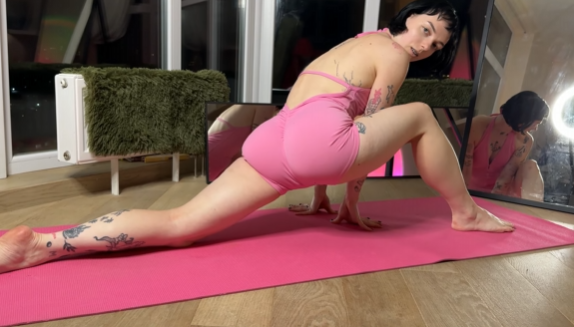
Creating a consistent evening practice is key to long-term relief from hip pain. Here’s a simple structure:
- Set the Mood: Dim the lights, play calming music, and focus on your breath. Evening stretches are as much about mental relaxation as physical release.
- Follow the Sequence: Start with Butterfly Pose to open the inner thighs, move into Pigeon Pose and Low Lunge to target the hip flexors, transition to Figure Four for glutes and outer hips, and finish with Reclined Bound Angle Pose for full relaxation.
- Breathe Deeply: Inhale to lengthen, exhale to release tension. Let the breath guide the depth of the stretch.
- Hold Each Pose: 30–60 seconds per side is ideal. Longer holds (up to 2–3 minutes) are perfect for restorative poses like Reclined Bound Angle.
- Consistency is Key: Practice nightly or at least 4–5 times per week to see meaningful improvements in mobility and reduction in hip pain.
Why Evening Yoga Helps Hip Pain
Evening is the perfect time for hip-focused yoga for several reasons:
- Muscle Relaxation: After a day of movement or sitting, muscles are warm and more receptive to stretching.
- Stress Release: Tight hips often carry emotional tension. Gentle yoga helps release both physical and mental stress.
- Improved Sleep: Relaxing stretches calm the nervous system, making it easier to drift into restful sleep.
- Injury Prevention: Regular evening stretching helps maintain hip flexibility, reducing the risk of strain during daily activity or workouts.
Tips for Maximum Effectiveness
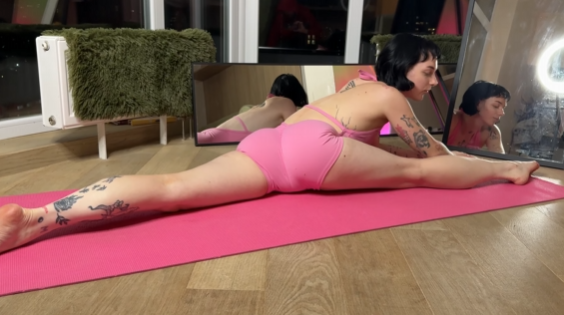
- Move slowly and mindfully — never force a stretch.
- Listen to your body; a gentle pull is ideal, sharp pain is a signal to back off.
- Use props like cushions, blankets, or yoga blocks for support.
- Pair stretches with deep, diaphragmatic breathing for maximum tension release.
- Stay consistent; hip flexibility improves gradually over time.
Conclusion
Hip pain doesn’t have to be a daily burden. By dedicating even 10–20 minutes in the evening to targeted yoga stretches, you can release tension, restore mobility, and enjoy freer, more comfortable movement.
The five stretches outlined here — Butterfly Pose, Pigeon Pose, Low Lunge, Figure Four Stretch, and Reclined Bound Angle Pose — address all the major muscles around the hips, including the hip flexors, glutes, and inner thighs. Combined with mindful breathing and a regular routine, they offer a powerful, natural solution to hip discomfort.
As you cultivate this evening ritual, you’ll notice not only reduced hip tension but also improved posture, better sleep, and a more relaxed, centered mind. The hips are the gateway to both movement and ease — open them gently, consistently, and mindfully, and you can say goodbye to hip pain for good.
Your body deserves this care. Your hips deserve this freedom. And your evenings can become a time of healing, release, and restorative movement. 🌙🧘♀️✨

